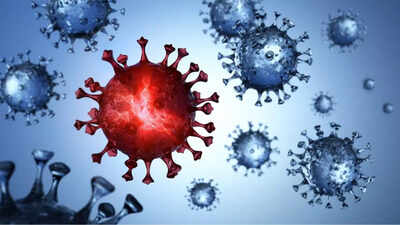A routine meal turned into a medical nightmare for a Florida man in his 70s who unknowingly contracted a rare bacterial infection while handling and eating feral pig meat.
The symptoms manifested many years later, when the slow-moving infection infiltrated his implanted defibrillator, putting his life at risk.
It all started when the man started feeling feverish, had intermittent pain, and excess fluid. It was also noticed that his skin hardened on the left side of his chest. Soon, the reason for these mysterious but scary symptoms was uncovered.
Upon getting medical attention, it was revealed that Brucella ama bacterium known to linger undetected in the body for years, had entered the man’s body on the day he cooked and ate the feral pig meat that he received as a gift from a local hunter.
Eating undercooked meat, drinking unpasteurized milk, breathing in the bacteria, preparing meat or hides after hunting can cause brucellosis.
Symptoms
Here’s a complete list of symptoms for brucellosis as per CDC:
Fever
Sweating
Generally feeling badly (malaise)
Not wanting to eat
Headache
Pain in muscles, joint, or back
Feeling more tired than usual or fatigue
Other symptoms may continue or may come and go until you’ve had treatment, including:
Fevers that keep coming back
Arthritis
Swelling of the testicles and scrotum area
Infection of the heart (endocarditis)
Memory loss, confusion, and irritability
Depression
Swelling of the liver and/or spleen

The case, recently documented in the journal Emerging Infectious Diseases, shed light on the hidden dangers of handling raw meat.
It is common for Brucella bacteria to hide in Defibrillators. Considering antibiotics are difficult to deliver to these implants if infected the device has to be taken out for proper treatment of the infection.
The case study was led by infectious disease specialist Jose Rodriguez from the University of Florida.
By the time the doctors realised what’s happening, the bacterial infection had already entered the man’s defibrillator, passing through the chest wall, the left subclavian vein, and into the muscular tissue of his left ventricle.
The only solution was to replace the medical device completely.
The infection is difficult to treat due to its ability to hide inside immune cells for years, and causing only mild, feverish symptoms that come and go at random. Blood tests also don’t always identify them.
As per the study, a Brucella infection of a defibrillator is extremely rare and in a 30-year review of 5,287 patients with a defibrillator, only one patient had a Brucella infection which required removal of a complete device.
How the man was diagnosed
In 2019, the man started experiencing discomfort on the left side of his chest many years after handling raw pig meat.
Suffering from type 2 diabetes and heart failure, he was earlier admitted to the hospital a couple of times that year, where he was given a whole host of antibiotics.
His blood cultures detected an infection caused by a bacterium different from B. suis, and an ultrasound of his heart revealed that his defibrillator had shifted to the left chest wall, just below the nipple.
In 2020 his symptoms still didn’t improve which led the man to seek treatment at a Veterans Affairs Medical Center in Gainesville, Florida.
While no outward sign of bacteria on his defibrillator’s valves or leads could be found, doctors thought there was a possibility of an overlooked infection. Subsequently, his automated implant was taken out of his body.
Lab findings confirmed the device was contaminated by B. suis.
“Substantial delays between Brucella exposure and clinical symptoms have been previously reported in patients with cardiac implantable electronic device infections,” write the authors of the case study.
“In this case, the intermittent use of antibiotics with device retainment likely led to a prolonged clinical course,” said the researchers.
Once the disease was diagnosed accurately, the man’s infection soon cleared after taking the required medication. The patient was given a new defibrillator four months after his old one was removed.
Thankfully, after three years there are no signs of brucellosis in his body. However, the learning from his story is that one should always be cautious about eating unpasteurized dairy products or wild animals.
















































